Rachel Neumeier's Blog, page 308
March 18, 2016
Cover art for female authors: a new trend away from pink and fluffy?
You remember when Maureen Johnson did her hilarious cover-flip thing with famous books, arguing that female authors are given fluffy pink covers that imply the book is also fluffy — low quality, not serious, all of that.
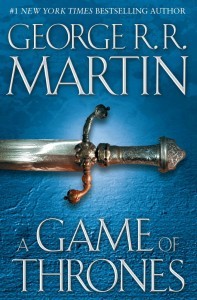
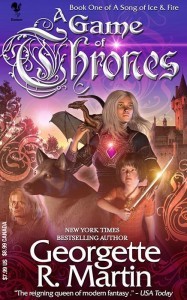
The coverflip offers a great series of re-imagined book covers, some as extreme as the above and some more subtle, many very clever; if you have time you should certainly click through the slide show and admire all the cover re-designs.
Anyway, at the time I basically thought Maureen was basically right and often — not always, but often — a female author would get a cover that implied lack of seriousness, fluffiness, romance, all of that.
Today, just a couple years later, it seems to me that this is simply not the case. Almost all the covers below are of books that have come or are coming out in 2016; a couple came out in 2015.
I got nearly all these covers off “most anticipated fantasy” and “YA to look forward to” kinds of lists for 2016. It took no time to find them. Although there were a few scattered girly-type covers mixed in with these, by far the majority of female-authored covers were not in any way girly. Check them out:
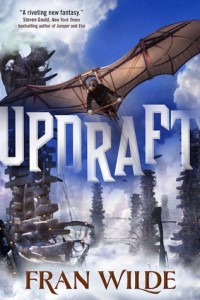
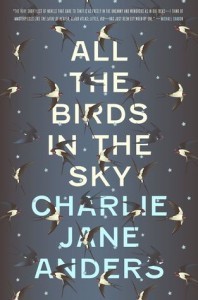
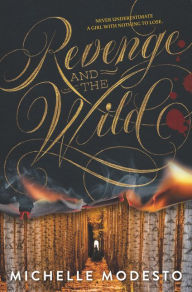
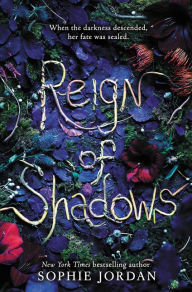
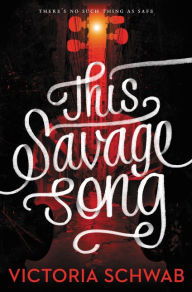
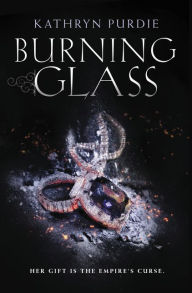
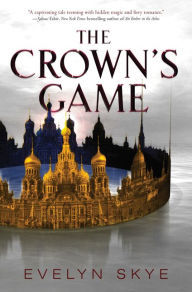
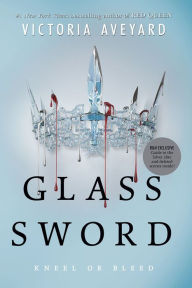
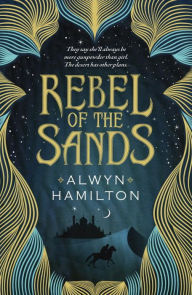
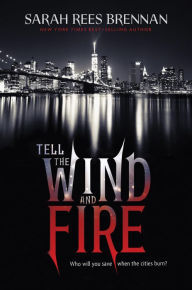
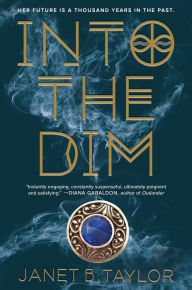
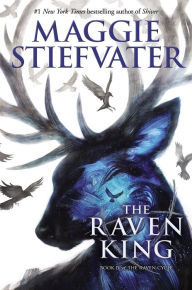
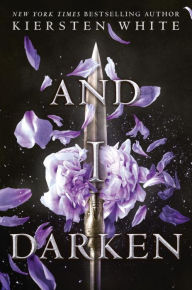
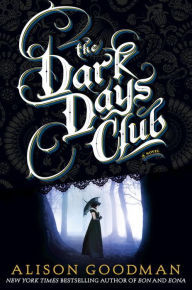
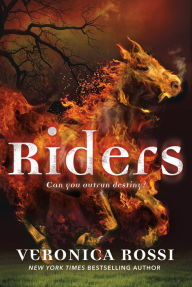
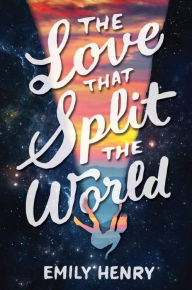
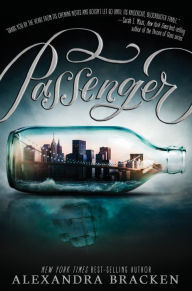
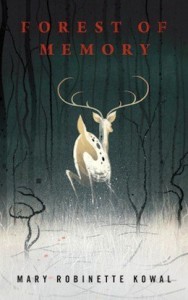
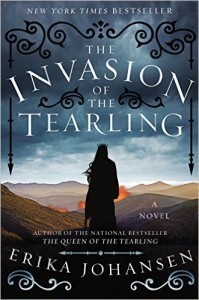
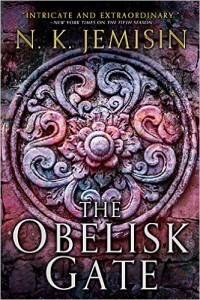
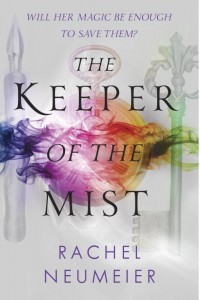
How about that?
Again, I’m not saying that there are zero covers with close-ups of girl’s faces or hearts or a pink background. One would hardly want to remove romance covers from books that actually are romances, after all. But there are sure A LOT of covers by female authors that just cannot be described as girly or fluffy in any way, both in YA and adult fantasy.
Not one of my three recent covers — The Keeper of the Mist, The Mountain of Kept Memory, and The White Road of the Moon, which I haven’t shown you yet because I’ve only got a rough draft of it — but though each is very different from the others, not one is girly, fluffy, or cute.
I just think that’s interesting.

Guest post: wow, MIST has a lot of important characters
Here’s a guest post I wrote for Holly at The Fox’s Hideaway — a brief character analysis for The Keeper of the Mist. Well, for seven of the most important characters.
You know, when you give your protagonist three older brothers and two important friends and then go on from there, honestly, MIST may have the highest number of important characters of any of my books. Except maybe Black Dog, I guess.
Certainly makes it a challenge when a blogger asks for a guest post of this kind! It reminds me of that game or exercise or whatever it is, where you try to describe yourself or someone else with one word. At least I got to use a few sentences per character, so not quite that hard. But still.

March 17, 2016
First pass through the Hugo nominations
Okay, I finally filled out some of the blanks on the nomination form. Here’s how it stands so far:
Novels:
In the Country of Ice Cream Star by Sandra Newman.
Silver on the Road by Laura Anne Gilman
Archivist Wasp by Nicole Kornher-Stace
Graphic Novels:
Sandman: Overture by Neil Gaiman. I don’t know if part or all of it might have been published before, but the deluxe edition I got was published last year and it’s amazing.
Nimona by Noelle Stevenson. After careful consideration, I think it’s ridiculous that this got nominated as a novel for the Andre Norton Award. The number of pages might make it look like a novel, but the number of words in a graphic novel is obviously way, way under what one would expect of an actual novel. On the other hand, it’s really good and I would be happy to see it on the Hugo ballot in the appropriate category.
Novellas:
Penric’s Demon by LMB. This isn’t just an automatic vote for Bujold, either. I really loved this novella.
Novelettes:
A Learning Experience by (ahem) me. Enough of you are nominating this one that I feel I can, too. If you nominate this story, thanks! If you emailed to tell me so, extra thanks!
Damage by David Levine. This is an AI ship story.
Short Stories:
Things You Can Buy for a Penny by Will Koffman. This is a really good story. Thanks to Linda S for bringing it to my attention. If you haven’t read it, you should click through when you have time!
Wooden Feathers by Ursula Vernon. A wonderful story. Thanks again to Linda S for pointing it out. I may actually cry if it doesn’t make the final cut.
Cat Pictures Please by Naomi Kritzer, which I linked to the other day.

Things I’m still considering:
Ancillary Mercy by Leckie. I only hesitate because it’s the third book of the series and after all she already won with the first book.
Uprooted by Novik. I really loved it, but I’ll be shocked if it doesn’t get nominated, so honestly I feel I might as well nominate other works that might not be as well known.
Carry On by Rowell. A rather meta fan-fic of a fictional Harry-Potter-esque series, but extremely clever and fun and definitely as worthy of an award as Redshirts, which was obviously also a take-off of a really popular series.
Bone Gap by Ruby. There are some elements I just can’t quite figure out, but I did love this book and it’s pretty likely I will nominate it in the end.
“So Much Cooking” by Kritzer. I agree it isn’t really SF, but it’s the ending which makes me hesitate more.
Things I haven’t read yet:
All the things! *weeps as we run out of time before nominations close*
If you have a really strong recommendation for something, please drop it in the comments.

March 16, 2016
What you say / What they hear
Here is a funny and possibly useful post from Janet Reid, who as you no doubt know is the agent who runs Query Shark (in addition to her regular blog where she posts about agenting and stuff).
What you say / What I hear, about how agents (Or she, at least) responds to certain typical lines in a query.
My favorite:
What you say: This novel has elements of sci-fi/thriller/YA/romance
What I hear: “My novel will appeal to EVERYBODY!”
What I do: skim the first page to verify you don’t know what you’re writing.
Your take away from this: Your book will not appeal to everyone. Get over it. Pick one category.
I think I especially like that one because it could be a real trap for me. I also would have trouble avoiding this. I’d me all like, Well, it DOES have elements of SF and triller and romance and western and horror, and I don’t KNOW whether to call it a YA or not…
So I sympathize with those who put that kind of thing in their query. But, don’t.
Janet offers half a dozen more examples of things not to put in queries, too.
Incidentally, sometimes the main female lead really can be a prostitute without the story falling into the category Janet describes in 4th example. I loved “Pretty Woman.” I grant you, the exact sentence Janet uses as her bad example does imply a different kind of story. After all, in “Pretty Woman,” the protagonist *was* the woman, not the guy she beguiled.

March 15, 2016
The world is filled with beauty
The Missouri primary is today and oh I am so tired of politics. What a stressful year. I’m sure we all need to be reminded that the world is still full of beauty. So, here:











Chocolate Cake with Peanut Butter Frosting
So, my Dad’s 82nd birthday was this past Saturday, so of course I made a cake. Now, his tastes have changed a bit as he’s gotten older: he prefers sweeter, less intensely chocolate desserts than he used to. And he likes peanut butter. So this cake was made to suit his tastes and is a little sweet for me.
It’s based on a cake from the January 2009 issue of Bon Appétit magazine (yes, I index promising-looking recipes from my magazine before I file them). Of course I didn’t exactly follow the recipe, which makes a two-layer cake and involves making peanut brittle to break up and add between the layers. That sounds like a fine idea, but I calculated ingredients for a three-layer cake and then took the cake in a somewhat different direction that didn’t involve peanut brittle. Here’s the cake I made:
Greg J Neumeier’s Chocolate Cake with Peanut Butter Frosting
4½ C all-purpose flour
3 C sugar
1 C cocoa powder
3 tsp baking soda
1¼ tsp salt
2 C water
1 C vegetable oil
3 Tbsp cider vinegar
1 Tbsp vanilla
6 oz peanut butter cups, rather finely chopped, or I might use Reese’s Pieces if I were making this cake again
8 oz good quality milk chocolate, chopped
10 Tbsp heavy cream
1½ C powdered sugar
1 C heavy cream
½ C creamy peanut butter
½ C cream cheese
Now, this is, as you can see, an oil cake rather than an eggs-and-butter cake. This gives you a cake with a nice moist crumb, and it also means that it’s going to get all its loft from the baking soda and vinegar rather than from you beating and beating and beating the butter with the sugar and then beating in the eggs one at a time and so on. So mixing the batter is very easy, like so:
Whisk together the flour, sugar, cocoa powder, baking soda, and salt in a very large mixing bowl.
Whisk together the water, oil, vinegar, and vanilla in another bowl.
Preheat the oven to 350 degrees and don’t proceed until the oven is preheated. While you wait, you can line three nine-inch cake pans with parchment paper and spray the paper and sides of the pans with cooking spray. Or use three eight-inch cake pans and make six cupcakes.
Now, it says gradually add the oil mixture to the bowl with the dry ingredients, but I wasn’t as gradual as all that. I basically just poured the wet ingredients into the dry ingredients and whisked the heck out of it. This is a lot of cake batter, but it wasn’t hard even with just a whisk rather than an electric mixer.
Now, divide the cake batter evenly into the prepared pans, sprinkle and bake for something on the order of 25-30 minutes, until a toothpick inserted in the center comes out with a few moist crumbs attached. Because of the chopped peanut butter cups, it might be a little hard to tell if the cakes are done with the standard toothpick test. Touch the top of a cake and it’s probably done if it feels springy. The peanut butter cups may cause one or more of the cakes to fall a little in the center, especially if you didn’t chop them finely enough as, ahem, I didn’t. This is nothing to worry about, though. Imperfections will be disguised with the frosting.
Cool the cakes on racks for ten minutes, run a knife around the edge of the pan, and turn out. If the peanut butter cups settled too much to the bottom of the cakes, you may want to cool them upside down because the top may wind up firmer than the bottom. It’s fine either way.
Make the milk chocolate ganache: Put the milk chocolate in a small bowl, pour over the cream, and heat in the microwave for a minute or two, stirring once or twice and then stirring until smooth. Put the ganache in the fridge to thicken. It’ll probably still be rather thin when you’re ready to assemble the cake. That’s fine.
Make the frosting: Beat together the powdered sugar, heavy cream (unwhipped), peanut butter, and cream cheese. My stand mixer made this look super easy with the wire whisk attachment, so if you have a stand mixer, you might want to use it here.
Assemble the cake: Put the first cake layer on a platter and spread half the ganache over it. I put it on the platter upside down. If the ganache is a bit runny, pipe or spoon a rim of frosting around the cake layer to hold it. I find it easier to frost the sides of the cake a layer at a time, so you might want to frost the sides of the first layer now. Top with the second layer, rightside up or upside down, whatever looks like it will work better. Repeat with the milk chocolate ganache and frosting. Top with the third layer and frost generously, touching up the sides.
Chill one hour. Scatter a few chopped peanut butter cups over the top and serve.
Now, obviously, if you’d like to cut the sweetness of this cake a bit, nothing stops you from using bittersweet chocolate in the ganache rather than milk chocolate. That would be the quickest and easiest way to change the overall flavor profile of the cake. On the other hand, if you don’t think a cake can possibly be too sweet, then you can do what the original recipe suggests and spread peanut butter frosting AND milk chocolate ganache between the layers. And sprinkle crushed peanut brittle between the layers, too. Whatever you like!

March 14, 2016
I don’t read much short fiction, but —
As you know, I don’t read a lot of short fiction. But as we approach the end of the Hugo nomination period, various people have been sharing links to short stories and novelettes and novellas, and so I have Linda S to thank for sending me the link to “So Much Cooking” by Naomi Kritzer.
Linda said that she doesn’t know about nominating this story because it really doesn’t have any particular speculative elements, and that’s true. But if it seems SF enough for Clarksworld, what the heck, it’s SF enough for me and I’ll probably wind up nominating it. It’s a story in the form of a cooking blog, and honestly, THAT IS SO CLEVER.
This is a food blog, not a disease blog, but of course the rumors all over about bird flu are making me nervous. I don’t know about you, but I deal with anxiety by cooking. So much cooking. But, I’m trying to stick to that New Year’s resolution to share four healthy recipes (entrées, salads, sides . . . ) for every dessert recipe I post, and I just wrote about those lemon meringue bars last week. So even though I dealt with my anxiety yesterday by baking another batch of those bars, and possibly by eating half of them in one sitting, I am not going to bake that new recipe I found for pecan bars today. No! Instead, I’m going to make my friend Carole’s amazing roast chicken. Because how better to deal with fears of bird flu than by eating a bird, am I right?
Here’s how you can make it yourself. You’ll need a chicken, first of all. Carole cuts it up herself but I’m lazy, so I buy a cut-up chicken at the store. You’ll need at least two pounds of potatoes. You’ll need a lemon and a garlic bulb. You’ll need a big wide roasting pan. I use a Cuisinart heavy-duty lasagna pan, but you can get by with a 13×9 cake pan….
So you can see just where that story is going from this beginning, can’t you?
The pros:
The format is just super-clever.
The narrator’s voice is distinctive and charming.
The recipes are fun to read and, at least at first, sound like they’d be perfectly usable recipes.
The tone is never hopeless or grim, even as times get dark.
The cons:
Does this story actually, you know, end?
Oh, I know, you can see those last couple of paragraphs as a kind of ending, and I suppose the entire last post does provide closure of a sort. And yet I did go check and make sure I didn’t miss some other part of the story that might have continued.
If you read this, I really want to know, what do you think of the ending? Thumbs up or thumbs down? How WOULD you end something like this? After all, blogs don’t end exactly, do they, at least we hope our favorite blogs aren’t going to end. So maybe the format suggests an ending like this one: One where you can easily imagine the next post and the next as life gets more back to normal. Maybe Kritzer actually chose to end like this because of that kind of idea of how blogs don’t feel finished. What do you think?
As an added note, I also really enjoyed this brief short story by Kritzer: “Cat Pictures Please.” Sounds like Kritzer and I would have lots to talk about if we actually met! In the meantime, a google search tells me that she has written a handful of novels. Based on these stories, I think I will just slide on over to Amazon and add one to my TBR pile.

Reading level analysis
Okay, now, listen, I have significant doubts about this whole reading level thing. And the fact is, doing a reading level analysis of my own writing was interesting, but it certainly isn’t going to change the way I write, as the title of the article claims.
But it’s still interesting!
The other day, a friend and I were talking about becoming better writers by looking at the “reading levels” of our work. Scholars have formulas for automatically estimating reading level using syllables, sentence length, and other proxies for vocabulary and concept complexity. After the chat, just for fun, I ran a chapter from my book through the most common one, the Flesch-Kincaid index …
The author of this piece found his book was written at the 8th grade level — and that Hemingway’s The Old Man and the Sea was written at the 4th grade level!
The reading level supposedly indicates the number of years of education you need in order to comprehend the text in question. The part I question is the use of proxies such as number of syllables per word to indicate vocabulary and concept complexity. Just how reliable are those proxies in identifying concept complexity? How exactly would ANY countable proxy indicate concept complexity? Do you really think a 4th grader could make anything of The Old Man and the Sea?
Well, well, it’s still a neat article. The author — Shane Snow — ran a bunch of things through various reading level indices, from Goodnight, Moon to an academic paper about chess and the Affordable Care Act. The results are laid out graphically and make for an interesting few moments’ perusal if you have time.
So naturally I couldn’t resist running a handful of my own books through the Flesch-Kincaid index. Now, I didn’t want to take a lot of time at this, so I just ran about ten pages or so for eight books through the index available right here. You just paste in text and bam! The reading level is automatically calculated.
I found my novels, at least the ones I checked, ranged from 7.1 to 9.1. Okay, I’d have predicted more or less that result. I’ve always said I’m writing at the high end of YA.
But what was really interesting and totally unexpected is that I also found a difference between my YA and adult novels! First, I don’t make any conscious effort to write YA differently than adult; and second, I sometimes don’t know which I am writing, as when my agent said for example that she wanted to try The City in the Lake as a YA when I hadn’t thought of it that way.
Well, the four YA novels I checked came out as suitable for grades 7.1, 7.5, 7.9, and 8.1. The four adult novels I checked indicated they were suitable for grade levels 8.1, 8.7, 8.9, and 9.1.
How about that? Pretty obvious difference, though of course there is also some overlap.
Out of curiosity, I also ran the introduction of my master’s thesis through the calculator. THAT came out at grade level 13.2.

March 13, 2016
Regency Romances, Still New After 200 Years
Here’s a post by Sherwood Smith over at Bookview Café: Regency Romance–still new after 200 years .
The title is funny because it’s true! I didn’t grow up reading Regencies the way Sherwood describes; I discovered Jane Austen when a friend dragged me to see “Sense and Sensibility” — it didn’t sound like my kind of thing at all, hence she had to drag me. Of course I loved it and read the book and then the rest of Austen. I was in grad school at the time.
Then I discovered Georgette Heyer when my brother recommended an audiobook (False Colors) much later than that, really just a few years ago. Her books sure do work well in audio; I could not believe how entertaining the first eighty minutes of False Colors is when it consists of nothing but the mother explaining to her son how deeply (and foolishly) in debt she is. I honestly have no idea how that loooong scene manages to be riveting, but there it is.
Anyway, Sherwood says:
I think of today’s Regency romances falling on a spectrum, with Jane Austen at one end: writing comedy-of-manners that happens to have a romance, Georgette Heyer in the middle, writing a mix of comedy-of-manners in the Silver Fork style, but with passionate kisses before the curtain fades, and at the other end of the spectrum, basically modern people doing a sort of Regency cosplay—you get the silks and stately homes, dukes and the ton (a word that seldom shows up outside its original meaning of ‘style’ in actual period, but which Heyer made de rigueur)
And then she goes on to describe a bit about modern Regencies and what different contemporary authors are doing, as well as giving a shout-out to one of my personal favorites, Sorcery and Cecelia by Patricia C. Wrede and Caroline Stevermer.
These days I like an occasional Regency, without or without fantasy elements, and without or without every period detail in meticulous order. Sherwood Smith doesn’t mention one of the authors I like, Theresa Romain, whose Christmas-themed Regencies fall very much on the modern end of the spectrum. I nearly always like modern-style Regencies despite the sex scenes rather than because of them, though.
On a somewhat different end of the spectrum . . . or maybe one end of a whole different spectrum . . . I did read the first part of Pride and Prejudice and Zombies and thought it was not a conceit that could hold up a whole novel. Funny as an idea, though.

A much bigger giveaway
Let me draw your attention to this giveaway arranged by a newer author, Azalea Dabill.
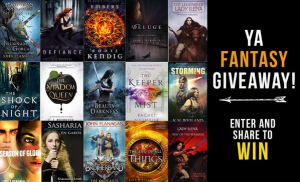
It’s an interesting idea: give away a set of fantasy novels that are meant to suggest what your own books are like. One of Sherwood Smith’s is in here, as well as The Keeper of the Mist and a bunch of others. Click through to check everything out and decide if you want to enter.




